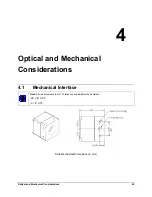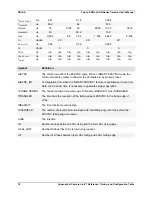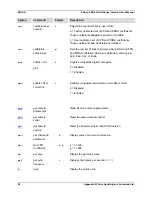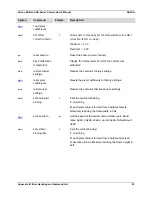
DALSA
Falcon XDR and HG Series Camera User's Manual
68
Optical and Mechanical Considerations
4.3 Optical
Interface
4.3.1 Illumination
The amount and wavelengths of light required to capture useful images depend on the particular
application. Factors include the nature, speed, and spectral characteristics of objects being imaged,
exposure times, light source characteristics, environmental and acquisition system specifics, and more.
It is often more important to consider exposure than illumination when calculating the total amount of
energy (which is related to the total number of photons reaching the sensor). For example, 5
μ
J/cm
2
can
be achieved by either exposing 5mW/cm
2
for 1ms or exposing an intensity of 5W/cm
2
for 1
μ
s.
4.3.2 Light
Sources
Keep these guidelines in mind when setting up your light source:
•
LED light sources are relatively inexpensive, provide a uniform field, and longer life span
compared to other light sources. Compared to Halogen light sources, LED’s provide more blue
and less red photons.
•
Halogen light sources generally provide very little blue relative to IR.
•
Fiber-optic light distribution systems generally transmit very little blue relative to IR.
•
Some light sources age; over their life span they produce less light. This aging may not be
uniform—a light source may produce progressively less light in some areas of the spectrum but
not others.
4.3.3 Filters
Digital cameras are extremely responsive to infrared (IR) wavelengths of light. To prevent infrared from
distorting the images you scan, use a “hot mirror” or IR cutoff filter that transmits visible wavelengths but
does not transmit wavelengths over 750nm. Examples are the Schneider Optics™ B+W 489, which
includes a mounting ring, the CORION™ LS-750, which does not include a mounting ring, and the
CORION™ HR-750 series hot mirror. Any good manufactured IR filter can be used.
4.3.4 Lens
Modeling
Any lens surrounded by air can be modeled for camera purposes using three primary points: the first and
second principal points and the second focal point. The primary points for a lens should be available from
the lens data sheet or from the lens manufacturer. Primed quantities denote characteristics of the image
side of the lens. That is,
h
is the object height and
h
′
is the image height.
The
focal point
is the point at which the image of an infinitely distant object is brought to focus. The
effective focal length (f
′
)
is the distance from the second principal point to the second focal point. The
Summary of Contents for Falcon 1.4M100 HG Monochrome
Page 28: ...DALSA Falcon XDR and HG Series Camera User s Manual 28 Camera Hardware Interface ...
Page 70: ...DALSA Falcon XDR and HG Series Camera User s Manual 70 Optical and Mechanical Considerations ...
Page 74: ...DALSA Falcon XDR and HG Series Camera User s Manual 74 Troubleshooting ...
Page 90: ...DALSA Falcon XDR and HG Series Camera User s Manual 90 Appendix C EMC Declaration ...
Page 92: ...DALSA Falcon XDR and HG Series Camera User s Manual 92 Technical Support ...
















































